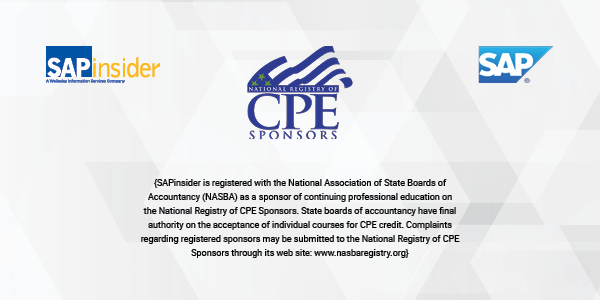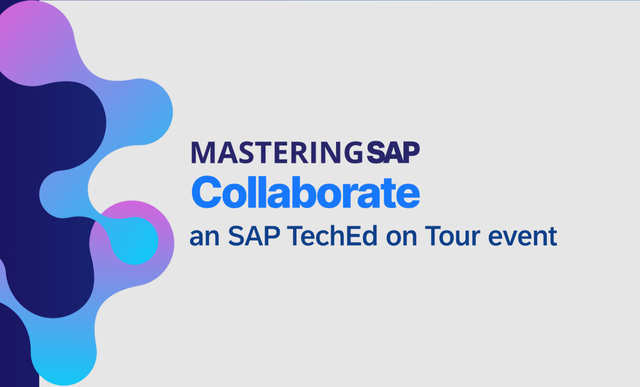Automation Helps Position Finance as a Strategic Partner
By John Yuva, Editor for SAPinsider
Companies are implementing automation into their operations at a rapid pace to achieve greater business efficiencies and cost savings. Automating financial processes is a strategic area of focus in those initiatives.
During the recent SAPinsider Finance & Automation2021 virtual event, Rizal Ahmed, Chief Content Officer for SAPinsider, opened the program with a statistical snapshot of where SAPinsiders are on their finance automation journey.
Explore related questions
- Business imperative. How critical is automation in finance? Automation was the leading strategy cited in the SAP S/4HANA Finance and Central Finance State of the Market Benchmark Report with 56% of respondents increasing their use of automation.
- Processes automated. Where has finance applied automation? According to the Automation in Finance Benchmark Report, 45% of respondents focused on invoice management/accounts payable followed by accounts receivable at nearly 40% and sales order processing at 35%.
- Satisfaction level. How satisfied are respondents with their automation implementation? Surprisingly, 54% of respondents in the Automation in Finance Benchmark Report indicated they were unsatisfied with their current automation solution and progress.
Ahmed closed with some insightful advice.
“Select pilots that really show ROI not two years down the road, but that can show immediate benefits because that will get people going and supporting the project,” said Ahmed.
“Also, talk to a mix of partners even beyond who you currently have to share good information of what is capable and what is out there. And really think of people that can support not just one small invoice automation project but can help support your end-to end-processes,” he concluded.
SAP and Finance Transformation Through Automation
The research snapshot provided an excellent segue into the SAP roadmap for transforming finance using automation technologies, combined with examples of how to leverage these solutions.
Birgit Starmanns, Senior Director, Global Center of Excellence, Finance and Risk for SAP, led the SAP roadmap overview and discussed several trends impacting the next stage of finance automation.
Transition into an intelligent enterprise. Companies are moving beyond simply automating a process and making it faster. With the use of more advanced types of artificial intelligence, companies are becoming intelligent enterprises — using systems as better tools for predictive outcomes and business decision-making that can transform the entire business.
Source of truth and strategic decision-making. With automation in place, there is a single source of truth through a universal journal as part of SAP S/4HANA Finance to understand the status of the company in real time. Predictive finance now helps the business evaluate the impact of financial strategic decisions.
Leverage new technologies. Artificial intelligence is top of mind for many companies, leading the way into the use of new technologies as part of the system, such as conversational AI to deliver meaningful responses. Robotic process automation and machine learning are only going to evolve into more system offerings.
Don’t reinvent the wheel. While many companies are exploring new automation technologies, leverage the different robotic process automation applications currently developed by SAP and its partners. What applications are already embedded in SAP software and available for use, such as invoice receipt reconciliation, vendor evaluation, and end-to-end technologies for procure-to-pay, order-to-cash, and record-to-report? Take advantage of the SAP Toolkit to share automation needs for future application development.
Next phase of machine learning. Machine learning continues to evolve, and SAP helps companies leverage those capabilities. Based on prior financial transactions, the machine learning engine recognizes how those were solved and incorporates those solutions into its algorithm. Different technologies such as optical character recognition, robotic process automation, and machine learning are all working together within end-to-end processes.
Predictive capabilities for cash application. The next realm of a cash application is collections where predictive capabilities and machine learning are driving those processes and outcomes. For example, the technology will prioritize what someone in the finance department needs to address first in a collections situation. While it could involve contacting the customer through a manual chat or phone call, the process can be automated with an email through robotic process automation.
Change management is critical as technologies evolve. As SAP continues to build up its applications and embed artificial intelligence (e.g., robotic process automation, machine learning, conversational AI, and predictive features), finance can expand on its strategic focus, becoming more analytical rather than just transactional. However, as those technologies become available, change management takes on a critical role to ensure a successful rollout. As finance moves into predictive technologies and capabilities, consider what’s required for upskilling your finance and risk teams to leverage these new offerings.
Hear more insights about finance automation from Renee Fan, Director of Financial Systems, Data Analytics and Controls for Freeport LNG; and Robert Michlewicz, Chief Strategy Officer for Trintech during a brief panel discussion around the impact of automation from a people perspective and building the business case for automation.
What Does This Mean for SAPinsiders?
- Predictive really helps companies and helps the finance organizations transform themselves and be a better partner to the business and other lines of business, for example, working with human resources, working with supply chain working with sales and marketing. So that’s really helping finance get a leg up, and to be more of an advisory advisor and strategic as part of decision making.
- Avoid rushing into automation based on current processes. Automating a poor process will not yield a short- or long-term positive outcome. Instead, focus on the standardization of controls and then the optimization of the teams involved in those controls before applying automation.
- Ensure you don’t overlook and underestimate the importance of change management. What tactics and training are being employed to help your team with adopting new technologies? How are you communicating the changes, the benefits, and the ROI to various teams and business units? Change management can be more critical than the technology itself.








